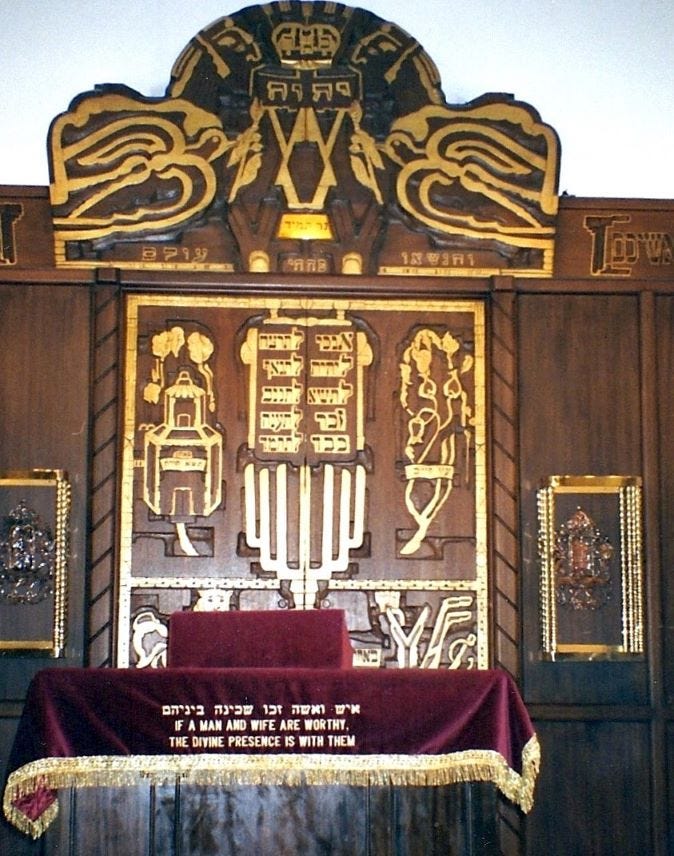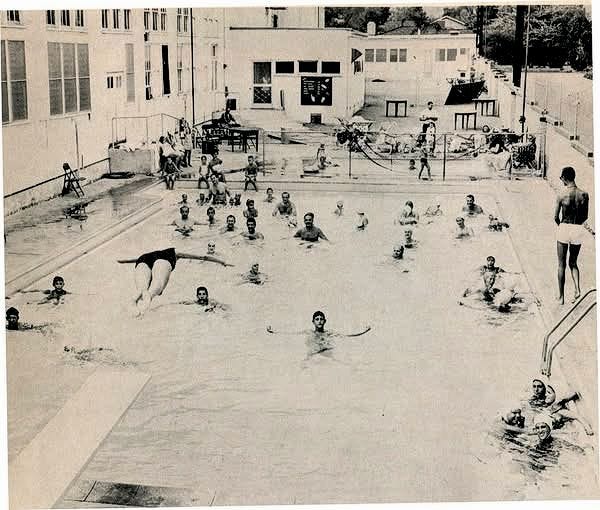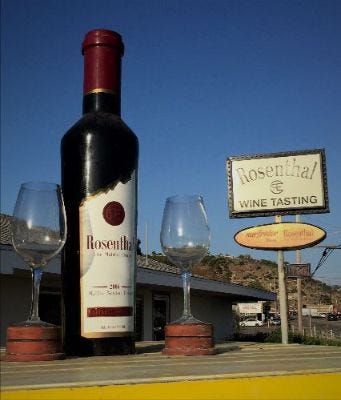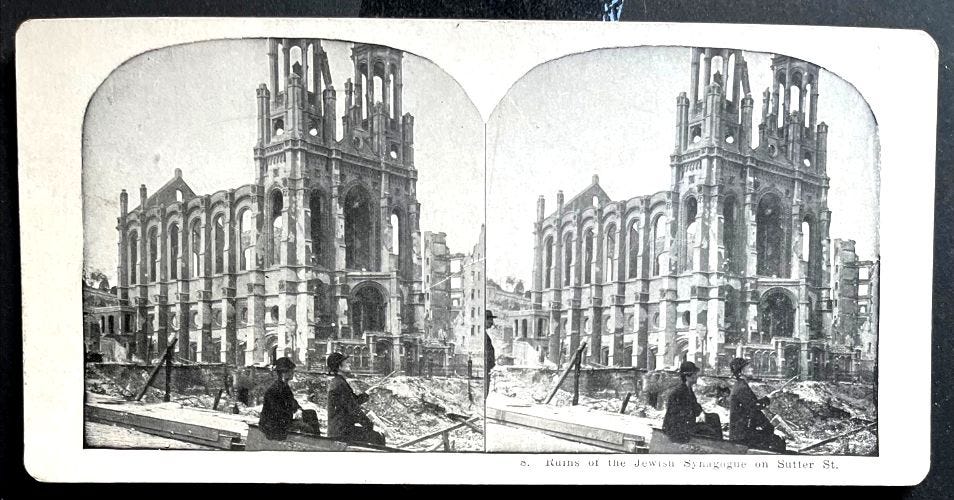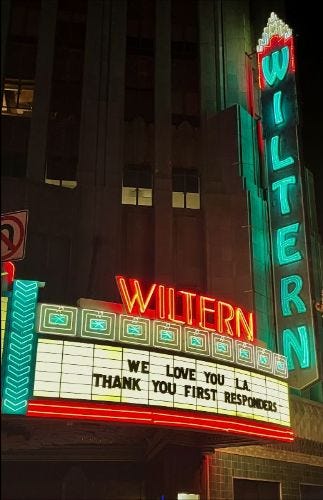The Fire of LA
A New Scroll of LA Jewish News
The Eaton Fire from Earth orbit January 8 . Photo, National Aeronautics and Space Administration (NASA)
Folks,
When the wildfires first started, I felt so above it all. Brush was burning in Pacific Palisades and Altadena, areas to which I seldom travel, and filled with people I did not know. But as the homes ignited, and the red line of flame advanced, I was pulled down to Earth. When a friend lost a house, I came closer. After seeing on TV a restaurant we had enjoyed left in smoking ruins, I came closer still. Ash on my car, and a sick orange sunrise; brought things down to level where I live. Too close. Finally, a synagogue I had written about was shown in flames, and though I knew it was not real, I could feel the flames.
Fire is often a puzzlement in Jewish life. It is the thing that burns but is not consumed. It also is as real as a match bursting into flame to light a Shabbat candle. Fire can burn us, and yet also burn inside. Fire brings memories of pogroms, the Holocaust, and tiki torches on parade. Fire also brings warm memories of a night in Israel singing around a campfire. A crackling bonfire on Tu B’shvat. A tzimmes burning in the oven. Fire is a plague, destroying the chords that hold a community together. And fire, as we all are learning, day by day, can also present us with a mitzvah by drawing us closer, and illuminating these words of Torah: Love your neighbor as yourself.
…A call to those readers who have yet to become paid subscribers, or who need to re-subscribe: Please help me continue publishing MegilLA into 2025. As a journalist, as your neighbor, I will be working to bring more light to the Jewish life around us. Help me continue the effort. Please SUBSCRIBE today.
Edmon J. Rodman
////\/\\\\
////\/\\\\
When a spiritual home
goes up in smoke
Torah Ark by Peter Krasnow. Photo courtesy Pasadena Jewish Temple & Center
Edmon J. Rodman
On the fiery night of January 7, more than the walls and prayer books of Pasadena Jewish Temple & Center burned. That night, in a mad dash though the smoke and ash, Cantor Ruth Berman Harris and her husband Laurence, joined by the synagogue president, Jack Singer, and custodian Robert Brown Jr, were able to save the shul’s 13 sefer Torahs.
What was unsavable were the personal touchstones that make a building a spiritual home.
“This news is beyond devastating and heartbreaking for us all,” said a letter emailed to congregants from the temple’s rabbi, Jill Gold Wright, and its cantor, executive director, president, and treasurer.
As of January 14, Cal Fire reported that 15 people died, 5 firefighters were injured, and 2752 structures were destroyed in the Eaton Fire.
Michael Several, for many years was the temple’s historian, also felt tremendous loss upon hearing the news. “When a temple goes, there is so much that goes with it, he said. A temple is a “house of memories.”
On both an individual and congregational level, the loss of the temple’s yahrzeit wall, a place where congregants placed the names, of family and friends who had died, presented an aching loss.
Also lost in the fire were the books that brought life, sound, and meaning to the Conservative temple’s 434 families, the sidurim, prayer books, and chumashim.
In Judaism, the act of beautifying an action that has been commanded, called hiddur mitzvah, is an act of elevation. The historic temple owned such an object, an over one-hundred-year-old wooden Aron Kodesh, Holy Ark, intricately carved by well-known Southern California artist Peter Krasnow. In the fire, it was lost.
Michael and his wife Ruth moved to the San Francisco Bay area five years before to be closer to their family, but that distance did not make the loss seem smaller or less poignant. “Seeing the photo of Wohlman Hall engulfed, was emotionally devastating. When I saw the photo of the temple on fire it reminded me of Kristallnacht,” said Several.
“A number of people who came during the temple’s golden years,” the years after WWII, built “their spiritual and social lives at the temple. They built that congregation. I can’t tell you the emotions they must be feeling,” said Several.
Michael also knew that the fire had touched the temple member’s homes as well. Seven families, that he knew of, lost their homes in the fire,” including the home of the temple’s former spiritual leader, Rabbi Joshua Levine Grater.
First called Temple B’nai Israel of Pasadena, the synagogue began in 1921. The congregation’s first home, completed in 1923, was in downtown Pasadena.
In late 1923, in a supplement of the B’nai B’rith Messenger, the paper cited several of the young temple’s “successful undertakings” including “the establishment of a library,” a benefit card party, and musicale.
Photo courtesy PJTC
In 1941, the congregation purchased a building built in Mission-Revival-style in the small town of Altadena. “The Ark for the temple presented a problem,” said a 1944 piece in the B’nai B’rith Messenger. “Should it be a conventional type, imitating the others, and placed there by an interior decorator as it is usually done?” Or, “Should it be different…breaking away from tradition?”
Choosing to be different, the congregation hired Jewish artist, Peter Krasnow, who had already created an Ark for Sinai Temple, to conceive and construct one for them.
Featuring a Torah crown, doves, menorah, and 10 Commandments in Hebrew, and inlaid with gold leaf, the design shown in the light of the sanctuary; creating its own kind of fire.
Later placed in the Knell Chapel, it was the last of Krasnow’s Ark designs to be in use.
Photo courtesy PJTC
‘
In 1949, the congregation changed its name from Temple B’nai Israel to the Pasadena Jewish Community. Led by Rabbi Max Vorspan (Who later with Lloyd P. Gartner wrote the definitive “History of the Jews of Los Angeles,”) began an experiment of combining aspects of a Jewish center with those of a synagogue.
A few years later, this initiative resulted in a name change to Pasadena Jewish Temple and Center (PJTC).
With contraction of the number of Jewish households in the area in the late 1990s, in 1997, the temple merged with Shomrei Emunah of Sunland-Tujunga. In 2009, PJTC merged with Shaarei Torah of Arcadia.
As a result of some foresight, much of this rich history was saved from the fire.
Before he moved to the Bay area, Several was able to give, with the help of both UCLA professor David N. Myers, and point person on the transfer, Dr. Karen Wilson (who passed away), around 50 boxes of archival material about the temple’s history, including photos and records, to the UCLA Special Collections section of the UCLA Library.
As of this report, the PJTC material, according to UCLA Library Special Collections is "still being processed," and is not accessible. However, some of this material can be found on a Facebook page Several created: San Gabriel Valley Jewish History.)
The fire has also reminded the congregation of an ancient lesson in Jewish continuity.
“We learn from our Torah how and why to construct our Mishkan, said the congregational letter. “In the desert of ancient days - and in Pasadena today - we know that sanctuaries have always been built and rebuilt.”
Donations to PJTC can be made HERE.
////\/\\\\
Camp donated by Josepho is gone
“We regret to inform you that Camp Josepho, our 84-year-old Scouting Camp located in the Santa Monica Mountains, has been destroyed in the Pacific Palisades Fire,” said an announcement from The Western Los Angeles County Council, a group representing Scouting in the north and west regions of Los Angeles County.
Nestled in the canyons, about a fifteen-minute drive from Sunset, the camp is named after Anatol Joespeho, a Jewish inventor, who donated the land and $30,000 to get the camp built.
In 1925, Jospeho (Josephewitz), a Russian Jew from Siberia, who had immigrated to New York, invented the automatic photo booth. That same year, he filed a patent, and soon opened in the heart of New York City what he called a Photomaton Studio.
The enterprise was wildly successful, and in 1927 he sold the North American rights to his invention for $1 million.
In 1928, he moved to Los Angeles, and in 1932 bought 100 acres in Rustic Canyon, where he built a home for his family. In 1941, Josepho, whose sons were Cub Scouts, purchased another 100 acres to the north of his property for what was to become a Boy Scout camp, and later for Cub Scouts and Webelos. (Read more about Josepho HERE. )
Council leadership plans to assess the extent of the damage "once the fires have been contained" and then "decide on next steps," said the announcement.
////\/\\\\
The National Council of Jewish Women Los Angeles is utilizing its infrastructure and institutional experience to provide relief for those affected by the fires.To support displaced individuals and families, the organization is offering $100 vouchers per person per household to be used at The Council Shop stores. Contact NCJWLA HERE
To assist this effort, the council is asking people to donate clothing and household items. Bring gently used items to any of NCJWLA’s seven Council Shop locations or to their new donation center. FIND A LOCATION
////\/\\\\
PCH wine bar blazes
Those who enjoy a glass of wine outdoors, will be saddened to learn that the Rosenthal Wine Bar & Patio, located on Pacific Coast Highway, burned down in the Palisades Fire.
After the fire, all that remained were the giant chairs and table.
George Rosenthal, is the owner of a tasting room in Malibu, as well as a 25-acre vineyard in the hills of the same city, that supplies the grapes for what was sold at the bar.
Rosenthal moved to L.A. in 1945. His first job was as a box boy at Vons. In 1955, he founded Raleigh Enterprises, a small general contracting firm that built its first single family residences in Garden Grove, and has grown since.
As a result of his work in building homes, in 1960, he was a team member of the Construction Division of the United Jewish Welfare Fund. Later in the decade, he constructed The Sunset Marquis in West Hollywood.
In 1991, Rosenthal produced his first vintage, a Cabernet Sauvignon. The winery is the only enterprise that bears his name.
All is not lost, however, as the winery’s website informs that “Due to recent wildfires in the Palisades, our wine bar and patio will be closed until it is safe to reopeon.”
Does that mean there will be more le’chayims at the burned-out site?
////\/\\\\
In a push to assist those whose lives have been upended by the fires…Jewish Free Loan Association (JFLA) is offering a limited number of zero-interest, zero-fee loans to individuals (up to $25,000), non-profits (up to $50,000), and small businesses (up to $50,000).
Individuals and families can use the funds for needs like temporary housing, vehicle replacement, food, clothing, and medicine.
Small Businesses and non-profits can apply the loan for relocation costs, inventory, marketing, and equipment replacement.
Those applying do not need to be Jewish, and loans are available even if the applicant does not have a guarantor. For more details on fire relief eligibility and how to apply click HERE.
////\/\\\\
*Live from the Archive:
After the BIG ONE,
a temple rebuilds
Edmon J. Rodman
Almost 120 years ago, after a cataclysmic disaster in California history, a northern California synagogue faced the challenge of rebuilding. In the 1906 San Francisco Earthquake and ensuing devastating fire, Temple Emanu-El (picture above in a stereoview) was gutted and damaged.
Before the twin disasters, according to several reports, the synagogue’s gold-tipped spires, one hundred sixty-feet high, could be seen by ships entering the Golden Gate. Even after the disaster, the towers remained iconic landmarks.
Founded in 1851, Congregation Emanu-El, was a large Orthodox congregation.composed mainly of German-speaking members.
After the earthquake, the Jewish community quickly raised the funds to restore the temple. New walls were built, and the stained glass was restored. In a re-design, the spires went from elegant onion-dome spires to stubby cones.
On September 1, 1907, the doors to the sanctuary reopened. At the re-dedication, Rabbi Jacob Voorsanger called the rebuilt temple “a symbol of our faith and hope, a contribution to the strength that shall soon again distinguish her. This spot is hallowed.”
*The Rodman Archive of Los Angeles Jewish History is a collection of approximately 1200 objects, photos, clothing, art, books, recordings, and ephemera relating to the lives and endeavors of Jewish Angelenos between 1850 and 1980.
////\/\\\\
Seen on the way: Koreatown
What more to say? Zei gezunt.
////\/\\\\




